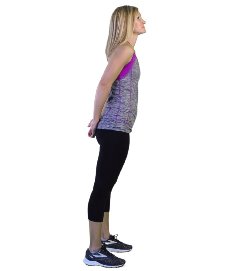Fall Prevention: Assessment and Management of Elderly Patients
Whether you want to hear it or not—your senior patients fall. These events are significant YET preventable. Elderly falls account for millions of injuries; resulting in loss of independence and reduced quality of life.
Aging is associated with declines in physical capabilities, activities of daily living, and maintaining proper postural control. Fortunately, evidence-based chiropractors are uniquely suited to help this population.
Watch this quick video to hear Dr. Steele’s thoughts on treating seniors and others at risk of falling.
Assess your elderly patient population for the risk of falling
Falls are preventable. Compared to 20-year-olds, healthy adults in their 70’s typically have up to a 20% reduction in gait velocity and stride length. (1) Elderly patients also adopt an increased stance width, increased time spent with both feet on the ground, hunched posture, and lower push-off force. These adaptations are thought to stabilize the gait in older people. However, not all accommodations are useful in the long term. Identifying and correcting these alterations may yield positive long-term results.
The Get-up-and-go test (GUG) is a useful assessment of function to monitor the progress of patients with lower extremity conditions and also assess the risk of falling. The analysis begins with the patient seated on a chair with armrests. The patient sits with their back touching the chair. At the clinician's command, they are instructed to get up and walk as fast as possible, straight-forward to a finish line 50 feet from the front of the chair. The test is timed.
The Timed Up and Go (TUG) test is another highly validated assessment that reliably detects gait and balance disorders. The exam measures the time that it takes for a person to rise from a chair, walk three meters, return to the chair, and sit back down. A score of ≥ 14 seconds indicates a high risk of falling.
Falls are preventable. Interventions can reduce falls by 30% to 40%. (2) Immediate positive results begin with shoe wear selection.
Foot pain can significantly increase the risk of falls. (3) Foot pain may be the result of neuropathy, postural stiffness, or orthopedic conditions. Foot pain is often related to improper-fitting shoes, and feet change over time. One survey found that 26% of older men and 47% of older women had not been re-measured for footwear size in more than five years.
Improper shoe wear may restrict motion, allow for excess movement, or produce friction blisters resulting in foot pain. Nearly 80% of older adults have orthopedic conditions affecting the foot. Structural abnormalities, including bunions, calluses, and hammertoes, are the result of uneven distribution of plantar pressure. (4)
Common Footwear Problem
Almost 33% of elderly adults go barefoot or wear slippers inside the house.
Simple Footwear Solution
Low-heeled, slip-resistant shoes with a broader and higher toe box improve balance by stabilizing the foot and reducing plantar pressure.
Fall Prevention Exercises
Patients at risk for falls should be assessed and managed. Experts recommend strengthening the foot, knee, and hip; while improving balance. Exercises should be performed weight-bearing to improve proprioception. Keep in mind that strengthening and balance improvements often take 4-6 weeks. The Single-Leg Stance and Vele's exercises traditionally perform well for these variables.
Begin standing near a wall for stability. Stand with your feet shoulder-width apart. Keeping your body straight, bend at the ankles to shift your weight forward onto your toes until your heels are about to lift off the floor. Return to the start position.
Stand on one leg and slowly bend your knee while maintaining your balance for 30 seconds. As your balance improves, you may increase the difficulty of this exercise by closing your eyes or standing on a softer surface like a pillow or towel.
Screen your elderly patients for gait and balance disorders. Then, address the most pertinent interventions (shoe wear/strength) to prevent further disability and loss of independence. (5)
Summary
Early interventions may decrease the risk of falls. Screenings like the Get-Up and Go test identify patients that may benefit from fall prevention strategies and exercises. Low load exercises, including the Single Leg Stance and Vele's, improve proprioception and strengthen the muscles that assist in fall prevention.
ChiroUp subscribers have access to an entire library of clinical forms that will help you to assess & manage all types of conditions. One form in particular that relates to your patient’s risk for falls is our foot exam form.
If you like what you see and want access to our entire clinical forms library, you know what to do. Get started today!
-
Salzman B. Gait and balance disorders in older adults. Am Fam Physician. 2010;82(1):61-68.
Chang JT, Morton SC, Rubenstein LZ, et al. Interventions for the prevention of falls in older adults: systematic review and meta-analysis of randomised clinical trials. BMJ. 2004;328(7441):680.
Eckles R. Fall Risk and Podiatric Intervention. Podiatry Management. 2016; April/May:161-169.
Cobbs A. Gait and Balance Dysfunction in Older Adults: Challenges and Interventions. LER. https://lermagazine.com/article/gait-and-balance-dysfunction-in-older-adults-challenges-and-interventions. Accessed 06/20/2019
Buldt AK, Menz H. Incorrectly fitted footwear, foot pain and foot disorders: a systematic search and narrative review of the literature. J Foot Ankle Res. 2018;11:43.


